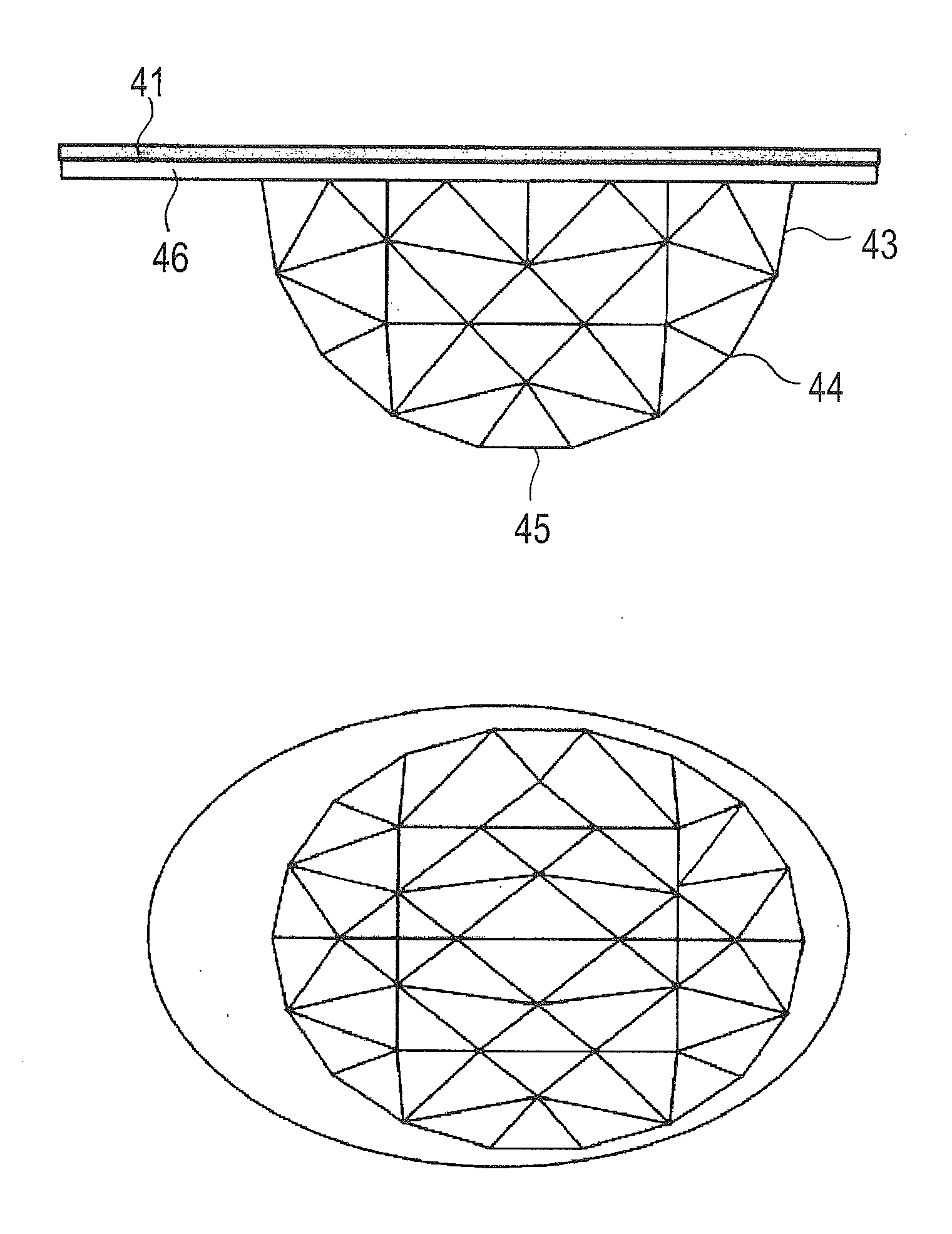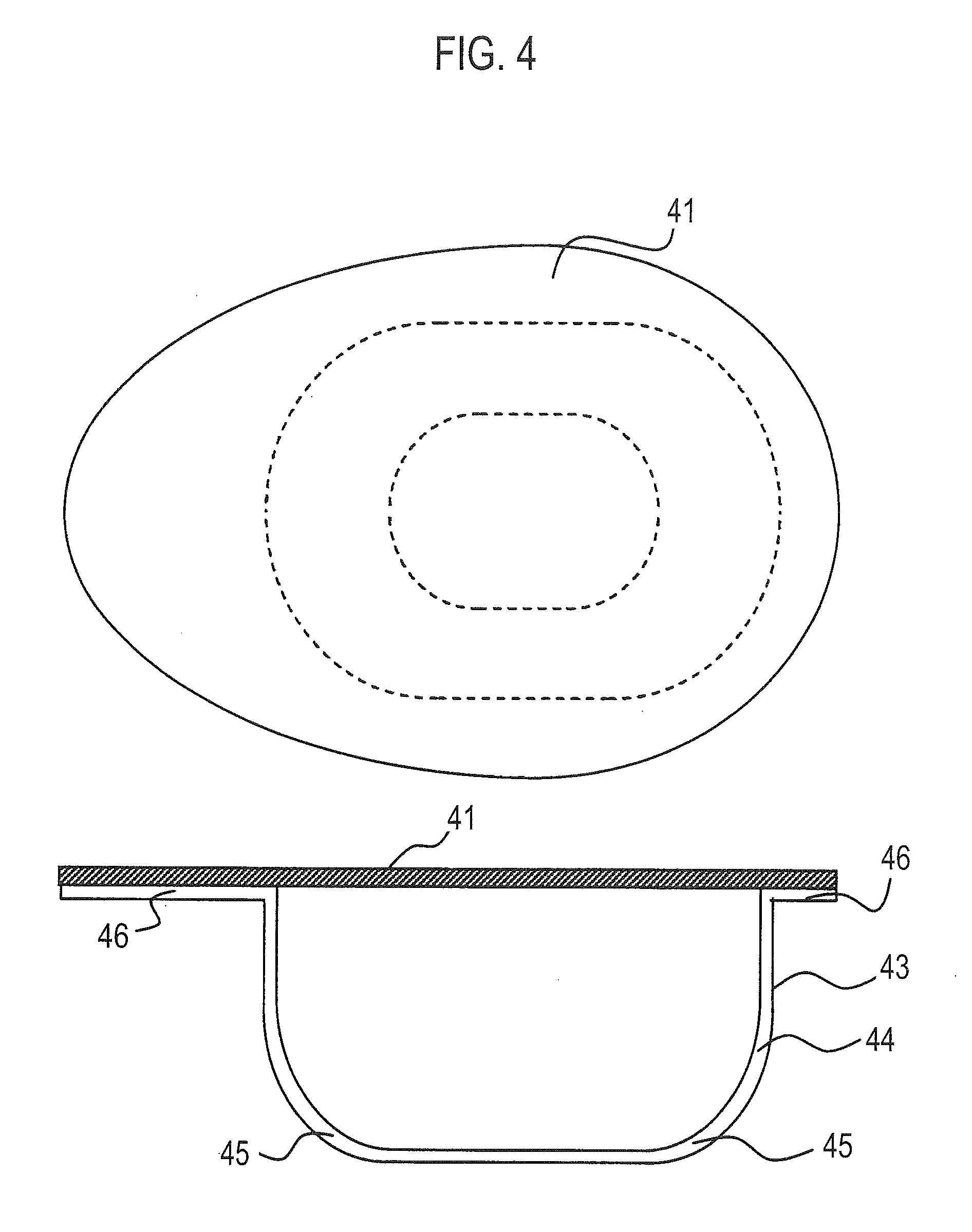Solubilized collagen fiber ball
a technology of solubilized collagen and ball, which is applied in the directions of monocomponent protein artificial filament, transportation and packaging, containers, etc., can solve the problems of difficult storage of aqueous solutions of solubilized collagen, problems in the production of solubilized collagen fibers, and product not completely satisfactory as a cosmetic material
- Summary
- Abstract
- Description
- Claims
- Application Information
AI Technical Summary
Benefits of technology
Problems solved by technology
Method used
Image
Examples
example 1
[0215]Samples of solubilized collagen fibers for use in cosmetics were prepared in the manner described below, and the time required for dissolution was measured. The isoionic point of the solubilized collagen fibers was confirmed in the manner described below.
[0216]Measurement of Isoionic Point
[0217]A cationic exchange resin (Amberlite IPR-120B, manufactured by Organo Corporation) and an anionic exchange resin (Amberlite IPA-400, manufactured by Organo Corporation) that had been activated and washed in advance were mixed in a ratio of 2:5 to prepare a mixed bed ion exchanger. Subsequently, 100 ml of this mixed ion exchanger was brought to equilibrium using deionized water, 50 ml of a sample solution prepared with a protein concentration of 5% was added to the ion exchanger, and the mixture was held at 40° C. in a water bath and stirred gently for 30 minutes. The supernatant was then removed from the mixture, the pH of the supernatant was measured, and this measured value was used a...
example 2
Sample 1
[0218]Preparation of Solubilized Collagen Aqueous Solution Under Alkaline Conditions
[0219]Using wet-salted pig hide as a raw material, liming was performed. Specifically, one half of a single wet-salted pig hide (approximately 4 kg) was cut into small skin pieces approximately 3 cm square, an amount of water equivalent to 300% of the mass of the skin pieces and 0.6% of a nonionic surfactant were added and stirred to wash the skin pieces, and the skin pieces were then recovered. Subsequently, the skin pieces were combined with an amount of water equivalent to 300% of the mass of the skin pieces, together with 0.6% of a nonionic surfactant and 0.75% of sodium carbonate, the mixture was stirred for 2 hours, and the skin pieces were once again recovered. Next, the recovered skin pieces were washed twice with amounts of water equivalent to 700% of the mass of the skin pieces, and the skin pieces were then combined with an amount of water equivalent to 300% of the mass of the skin...
example 3
[0247]Preparation of Aqueous Liquid for Cosmetics
[0248]An aqueous liquid (with a pH of approximately 6.6) for cosmetics was prepared from 5.0 mass % of 1,2-pentanediol, 5.0 mass % of glycerol, 3 mass % of 1,3-butylene glycol, 0.66 mass % of sodium citrate, 0.03 mass % of citric acid, with the remainder composed of sterilized water.
[0249]A 10 mg collagen sample (as shown below in Table 1) was placed in the palm of the hand, one cc of the above aqueous liquid was added, the mixture was blended with a finger to achieve dissolution, and the time required to completely dissolve the collagen sample was measured. For each sample, the measurement was repeated 5 times, and the minimum value, the maximum value, the mean value and the median value were determined from the measurement results. The results are shown in Table 1.
[0250]The samples were a solubilized collagen fiber bundle 1 of the present invention, fiber balls with solubilized collagen fibers of the present invention (3 examples), ...
PUM
| Property | Measurement | Unit |
|---|---|---|
| weight | aaaaa | aaaaa |
| pH | aaaaa | aaaaa |
| RH | aaaaa | aaaaa |
Abstract
Description
Claims
Application Information
 Login to View More
Login to View More - R&D
- Intellectual Property
- Life Sciences
- Materials
- Tech Scout
- Unparalleled Data Quality
- Higher Quality Content
- 60% Fewer Hallucinations
Browse by: Latest US Patents, China's latest patents, Technical Efficacy Thesaurus, Application Domain, Technology Topic, Popular Technical Reports.
© 2025 PatSnap. All rights reserved.Legal|Privacy policy|Modern Slavery Act Transparency Statement|Sitemap|About US| Contact US: help@patsnap.com



